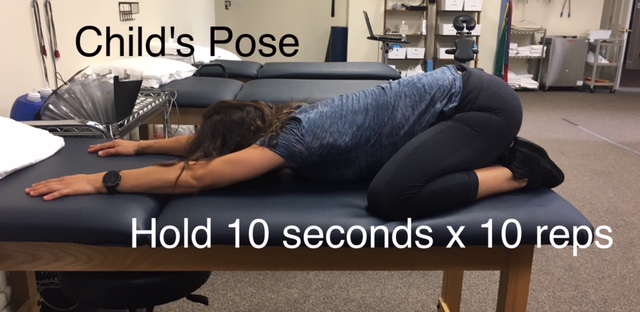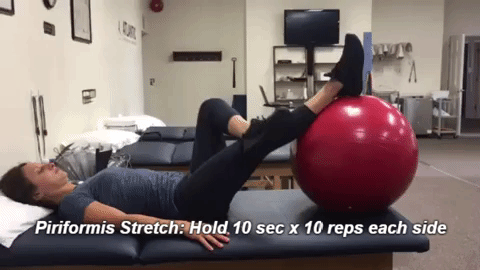There are many causes of pelvic floor spasm and tightness. Sometimes nerve irritation from infection or low back injury can cause the pelvic floor to spasm. Another cause is overuse of the pelvic floor muscles during stabilization of the pelvis during movement. This happens if hip or abdominal muscles are weak and the pelvic floor muscles have to work harder to compensate. Trauma can also cause pain and tightness in the pelvic floor. Treatment of pelvic floor spasm and tightness often includes stabilization exercises, manual trigger point massage techniques, and biofeedback for muscle activation. Seeing a pelvic floor specialist is essential because treatment is customized to a patient’s specific issues.
Pelvic floor tightness and spasm is a common problem we see in patients with pelvic pain. Stretching and diaphragmatic breathing are one strategy we use to help release spasm and alleviate pain. If you feel tightness in your groin, these stretches can be helpful, but as always, make sure you contact your physician before beginning any exercise program. Pelvic floor physical therapists are also a great resource for pelvic pain management strategies. Make sure you speak to your doctor or pelvic floor therapist if you have pelvic pain that lasts greater than a week.
These are our favorite exercises that we use to treat a tight and/or spastic pelvic floor.
Yogi squat: this pose provides both strengthening and stretching to the muscles of the leg. It is an excellent way to open up the lower back and groin, as well as centralize the hips. Activating the core as you squat can provide a stability challenge and improve your functional posture.
Happy baby: this pose provides a release to your lower back and sacrum. The SI joint can be dysfunctional for many pelvic floor patients. Opening this area as well as the inner thighs can assist in rehabilitation from pelvic floor dysfunction.
Piriformis stretch: the piriformis muscle is a very deep-set muscle that is often extremely tight and tender in pelvic floor patients. This exercise provides a gentle stretch to the piriformis muscle, which is especially hard to release because of its depth.
Cat-Camel: this pose has multiple benefits as it works to strengthen and stabilize your core as well as provide a stretch both on the front and back of your body.
Child’s Pose: A great stretch for the low back. Adjust how wide your knees are to be as relaxed as possible.

Lower Trunk Location: A great stretch for the quadratus lumborum muscle in your low back.
These stretches are great when performed with diaphragmatic breathing- breathing in through your nose and letting your belly fill up with air and exhaling through your mouth. This is helpful to increase relaxation of tight muscles.
For more information about pelvic stretching and pelvic physical therapy,
Thank you to Randi Dahms, SPT for demonstrating the stretches and contributing to the picture descriptions.





